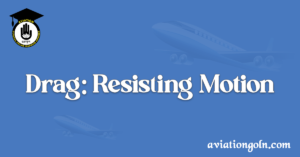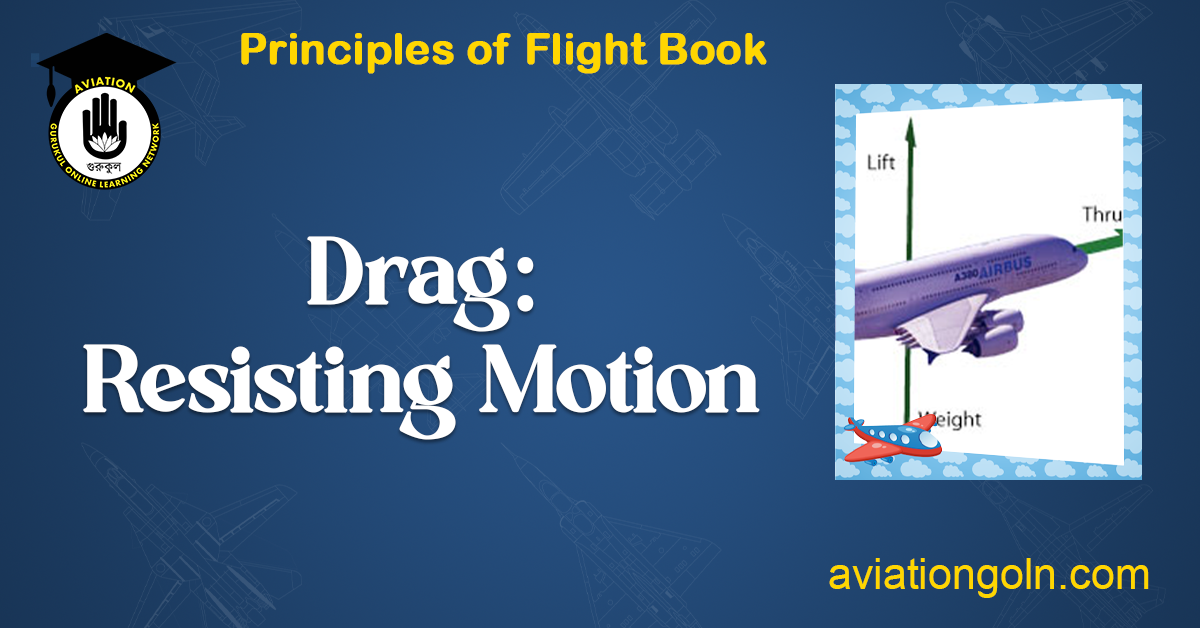In the world of aviation, there are several physical forces that determine the behavior of an aircraft in flight. These forces are foundational to understanding the dynamics of flight and the design and operation of aircraft. Of the four primary forces – lift, weight (or gravity), thrust, and drag – it is the force of drag that directly opposes an aircraft’s forward motion. This article delves deeply into the intricacies of drag as one of the four essential forces of flight.

1. Introduction to the Four Forces of Flight
Before diving deep into the nature of drag, it’s vital to understand all four forces of flight as they are interrelated.
- Lift: Produced by the wings, lift opposes the weight of the aircraft, enabling it to rise into the air.
- Weight (Gravity): This force pulls the aircraft toward the Earth’s surface. It’s a constant force, acting at the aircraft’s center of gravity.
- Thrust: Produced by the engines, thrust propels the aircraft forward.
- Drag: This is the aerodynamic resistance the aircraft encounters as it moves through the air. It acts opposite to the direction of flight and opposes thrust.
2. Understanding Drag
Drag can be viewed as the aerodynamic cost of doing business in the sky. Every component of an aircraft, from its wings and fuselage to its landing gear, generates some level of drag. But what exactly causes drag?
At its core, drag is a resistive force caused by the disruption of airflow by a body moving through a fluid (in this case, air). This disruption leads to changes in pressure and velocity around the aircraft, causing energy losses and resistance to motion.
2.1. Types of Drag
Broadly speaking, drag can be broken down into two main categories:
- Parasite Drag: This type of drag does not contribute to lift and is further divided into form drag and skin friction.
- Form Drag (Pressure Drag): Caused by the shape or form of an object. As air flows around an aircraft, it must move faster over some parts than others, leading to varying pressures. This differential in pressure can cause a backward pull or resistance.
- Skin Friction: This results from the air’s viscosity as it moves over the surface of the aircraft. The layer of air that’s directly in contact with the aircraft tends to stick to the surface, leading to a frictional force.
- Induced Drag: This type of drag is a byproduct of lift. As an aircraft generates lift, it also produces wingtip vortices due to the high-pressure air from below the wing rushing to meet the low-pressure air above. These vortices produce turbulence, leading to induced drag.
2.2. Factors Affecting Drag
Several factors influence the amount of drag an aircraft experiences:
- Speed: The faster an aircraft moves, the more air it displaces, leading to increased drag. However, the relationship between speed and drag isn’t linear. As speed increases, drag increases exponentially.
- Air Density: Thin air, often found at higher altitudes, produces less drag than dense air, prevalent at lower altitudes.
- Aircraft Surface Area: The larger the surface area exposed to the oncoming air, the higher the drag. This is why streamlined designs are preferred in aviation.
- Aircraft Shape: A well-designed, streamlined shape can significantly reduce form drag. This is evident in modern jet airliners, which prioritize aerodynamic efficiency.
3. Managing Drag
Pilots and aircraft designers have a vested interest in managing and reducing drag, as it directly impacts fuel efficiency and speed.
- Streamlining: This involves shaping an object (like an aircraft) to reduce its aerodynamic drag. Streamlined shapes allow air to flow smoothly over the surface, decreasing the pressure drag.
- Retractable Landing Gear: By retracting the landing gear during flight, the aircraft presents a smoother profile to the oncoming air, reducing drag.
- Winglets: These are small, vertical projections at the tips of wings. They reduce the size and strength of wingtip vortices, thereby decreasing induced drag.
- Use of Flaps and Slats: These extendable parts of the wing can be adjusted in flight to change the wing’s shape and characteristics. While they can increase drag, they also improve lift, especially during takeoff and landing.
4. Drag in Relation to the Other Forces of Flight
The delicate balance between the four forces of flight ensures stable and controlled flight. For instance:
- To climb, an aircraft must produce more lift than weight and more thrust than drag.
- To descend, the aircraft requires more weight than lift and more drag than thrust.
- In level flight, lift equals weight, and thrust equals drag.
5. Conclusion
Understanding drag is crucial for pilots, aircraft designers, and aviation enthusiasts alike. It’s not just a resistive force; it’s an indicator of an aircraft’s efficiency, performance, and safety. As aviation technology continues to evolve, innovations focused on reducing drag will remain at the forefront, ensuring that future aircraft are faster, more efficient, and more environmentally friendly.
While the intricate dance of the four forces of flight is complex, they create a harmonious balance allowing the wonder of aviation to continue inspiring generations.
